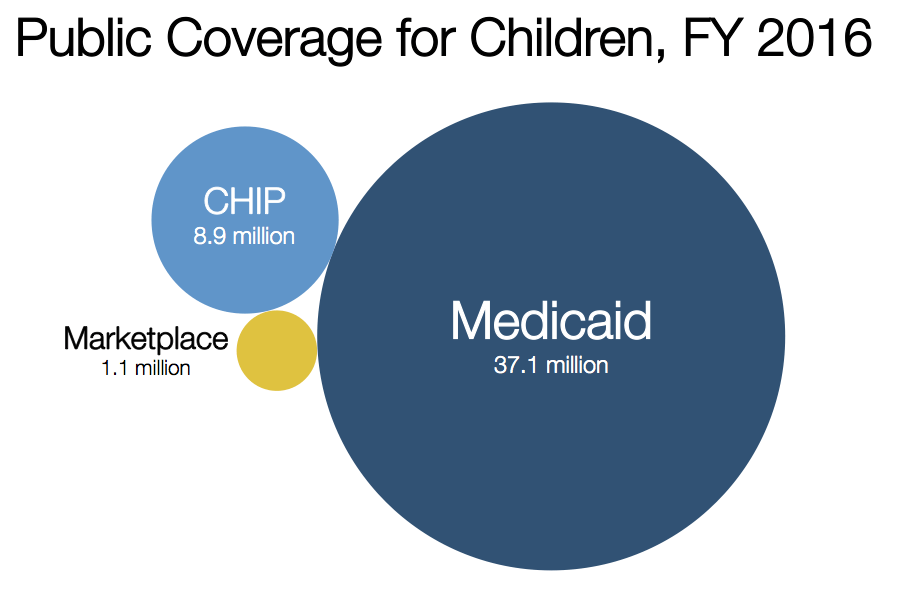One of the largest challenges in showing the potential impact of the latest House-passed proposal to repeal the ACA is elevating the fact that our nation’s success in covering children is at major risk. Medicaid, accompanied by the Children’s Health Insurance Program (CHIP) and the Affordable Care Act (ACA), has been the primary reason our nation’s coverage for children is at an all-time high of 95%. Medicaid cuts (and restructured financing) on the table in ACA repeal would impact all Americans who rely on Medicaid, but especially children, who make up more than half of those who rely on Medicaid to meet their health needs. Yet misinformation on how children are covered persists, and most people don’t realize that Medicaid is the MVP of children’s coverage.
The misunderstanding is widespread. Not even a medical doctor who serves in the U.S. Senate seems to understand the essential role Medicaid plays for children. Last night, Senator Bill Cassidy of Louisiana appeared on Jimmy Kimmel to discuss the ACA repeal efforts (video here starts around 7 minutes in). Jimmy correctly asked about the ways Medicaid cuts would harm kids. Senator Cassidy replied “Most children covered under the CHIP program[…] that’s almost independent from Medicaid.”
While it’s great the Senator wants to protect children from losing coverage, he is going to have to take a closer look at how children are connected with coverage and the importance of preserving a strong Medicaid program in order to achieve that goal. As our graphic shows, four times as many children are covered by Medicaid than CHIP. CHIP covered nearly 9 million children and Medicaid covered about 37 million last year. While Medicaid has served children for more than 50 years, CHIP was passed in 1997 to help states extend coverage to children whose families made too much to qualify for Medicaid. Also, many states use CHIP funds to serve children in Medicaid, as opposed to having a separate CHIP program (many do a combination of the two approaches). Because of this, more than half of the children served by CHIP are technically in the Medicaid program. So it’s not a fair characterization of how CHIP works to say it’s independent from Medicaid. In reality, Medicaid and CHIP work hand in hand to meet the needs of children. In fact, CHIP only works because Medicaid serves as a strong foundation and serves more than four times as many children.
So gutting Medicaid—as the AHCA seeks to do— would also pull the rug out from our nation’s success, undermining CHIP’s success as well.
Together Medicaid and CHIP cover:
- Nearly 40% of all children and nearly half of young children (under 6).
- Nearly 80% of children living near poverty.
- All foster care children.
- 43% of children with disabilities or special health care needs.
- Nearly half of all births and newborn care.
We also know Medicaid creates opportunities for children as they grow into adulthood. Research has shown that children with Medicaid coverage are not only healthier as adults, they are more likely to graduate from high school, finish college, and earn more in wages.
So it’s time to remind our lawmakers of the major role Medicaid plays in covering children and setting them up for success in life. Cutting Medicaid would cause our nation to make a U-turn on the remarkable progress we have made in lowering the child uninsured rate to a historic level. And capping federal Medicaid funds to states would break that critical link that has helped so many children get the health care they need to succeed.
(If you are interested in seeing how Medicaid serves the needs of children in your state, check out the state snapshots we put together with the American Academy of Pediatrics. You can also see children’s Medicaid coverage by county and Congressional district here.)





